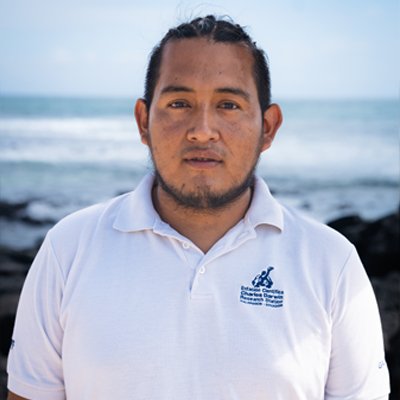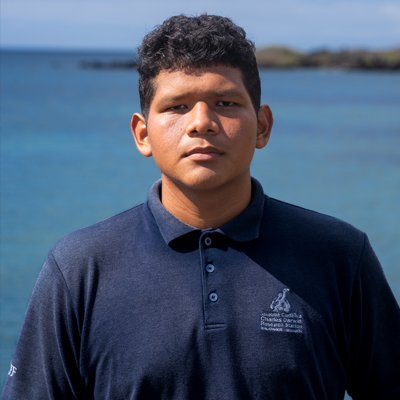More than half of the endemic plant species in Galapagos are currently classified as threatened. The potential loss of these imperiled species not only disrupts ecosystem integrity, but also jeopardizes the survival of iconic native fauna that depend on it. We are updating the IUCN Red List of endangered plant species of Galapagos in order to enable targeted species conservation actions.
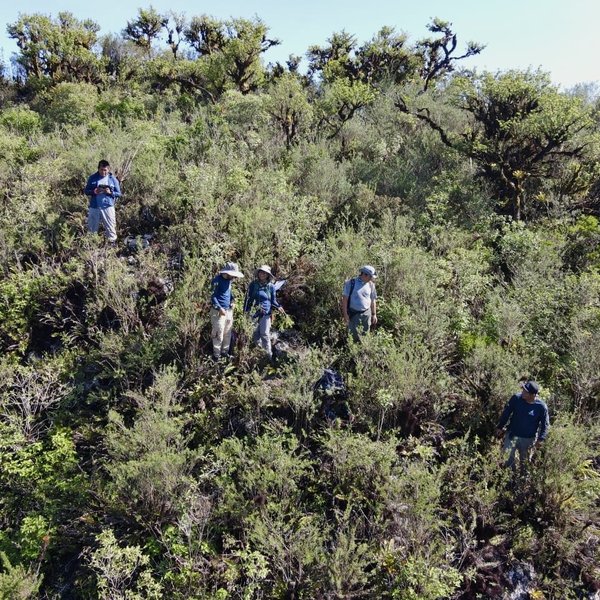
Our team
Patricia Jaramillo Díaz
Principal Investigator - Galapagos Verde 2050
Paúl Mayorga
Technical Assistant
Danyer Zambrano
Field Assistant
Other collaborators
Alan Tye, IUCN
Alberto Vélez, Carlos Efraín Masaquiza Chango, Jean Pierre Cadena and Ronal Azuero, ABG
Antonio León-Reyes, Universidad San Francisco de Quito
Christian Smit Rijks, University of Groningen
Daniel Sherman, Galápagos Conservancy
Jéssica Duchicela Escobar, Universidad de las Fuerzas Armadas – ESPE
María del Mar Trigo, Universidad de Málaga
Nicolás Velasco, Universidad de Las Américas y Universidad de Chile
Ramiro Osciel Bustamante Araya, Universidad de Chile
Tui De Roy, photographer
Vanessa Bieker, José Cerca and Mike Martin, Norwegian University of Science and Technology (NTN).
Washington Tapia, Species Survival Commission (SSC) of the IUCN
Collaborating institutions
Agencia de Bioseguridad Galápagos (ABG)
Ciencia Pura
Galapagos Conservancy
Galapagos National Park Directorate
Lindblad Expeditions National Geographic Fund
New York State University
Norwegian University of Science and Technology (NTNU)
Universidad de Alicante
Universidad de Chile
Universidad de Málaga
Universidad de las Fuerzas Armadas-ESPE
University of Copenhagen
University of Groningen
Donors
COmON Foundation
Stanley Smith Horticultural Trust
Hurtigruten Foundation
Galapagos Conservation Trust
Johnsonswax del Ecuador S.A.
The Challenge
The Galapagos Islands boast an almost intact plant community, with only three plant extinctions recorded to date. However, the current status of the Galapagos flora is worrisome, with more than half of the endemic plant species currently classified as threatened. Of these, 12% are considered critically endangered, 15% endangered, and 32% vulnerable. The potential loss of these imperiled species could lead to disruptions in species interactions, nutrient cycles, and overall ecosystem health. The main challenges facing Galapagos flora today are:
Invasive species
In the past, introduced goats devastated native island vegetation. Though goats were eradicated in most islands, other invasive species persist such as the invasive plant Supirosa (Lantana camara) or blackberry (Rubeus niveus), both of which compete fiercely for resources, and the cottony cushion scale (Icerya purchasi) that weakens plants by feeding on their sap.
Climate change
Rising temperatures, changing rainfall patterns, and the increasing frequency of extreme weather events are affecting plant species adapted to a specific set of environmental conditions
Freshwater scarcity
This crucial resource is limited on these islands, where 83% of the land area falls within the arid zone. The recovery of plant communities from perturbations in this zone is a very slow process due to exceptionally dry conditions marked by sporadic El Niño events.
Land use change
Human population growth has experienced exponential growth in Galapagos over the past few decades. Former natural areas where endemic or native species were distributed are now threatened by anthropogenic stressors such as urban and agricultural expansion.
What we are Doing
Our work consists in identifying the Galapagos endemic plant species that need to be updated in the IUCN Red List in order to prioritize species conservation accordingly across the islands of Isabela, Santa Cruz, Española, Plaza Sur, and Floreana. We also conduct germination and planting experiments to improve seedling survival rates and increase population size of threatened, employing evidence-based strategies for in situ and ex situ recovery. Other components of our work include:
- Physical protection: We install protective fences around populations of threatened species that are affected by large herbivores.
- Planting and monitoring: We assess the impact of treatments to improve water and nutrient access for seedling growth and survival, and identify effective water-saving technologies for various species and locations.
- Plant propagation: We propagate threatened species from greenhouses on Santa Cruz and Floreana Islands.
- Education and Outreach: We raise awareness among the local youth and broader community about the unique, at-risk plant species of the Galapagos by providing educational resources and engaging them in species recovery activities.
Threatened species we work with
- Galapagos shrub snapdragon
- Straight-spined Lecocarpus
- Scalesia
- Floreana flax & Floreana lippia
- Galapagos prickly pear
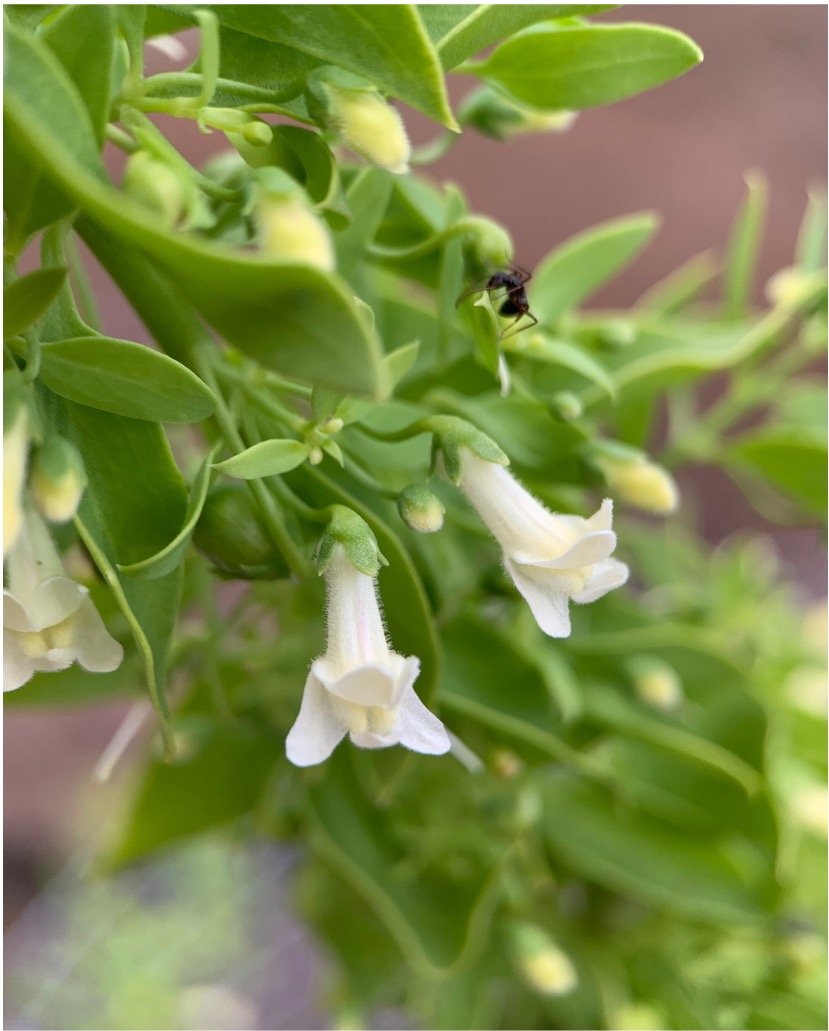
The Galapagos shrub snapdragon (Galvezia leucantha), with its three subspecies, only has a few individuals left. The subspecies G. leucantha leucantha has been reduced to only one population in Playa Tortuga Negra, Isabela.
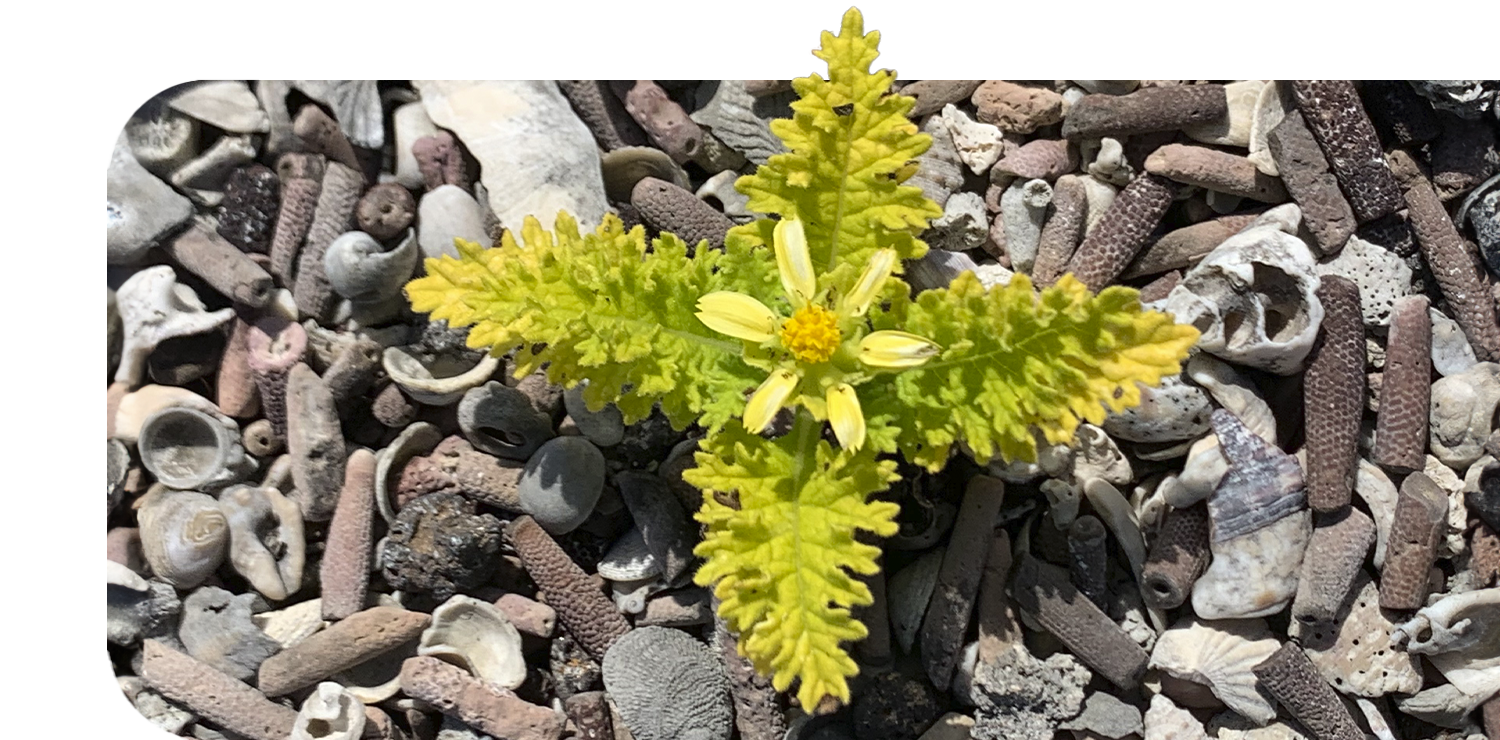
The straight-spined Lecocarpus (Lecocarpus lecocarpoides) is endemic to Española Island and four of its surrounding islets (Gardner, Oeste, Osborn, and Xarifa). It is an shrub with yellow flowers that was thought to be locally extinct in Española for almost a decade. In recent years, the population has varied between no recorded individuals found to 60 individuals.
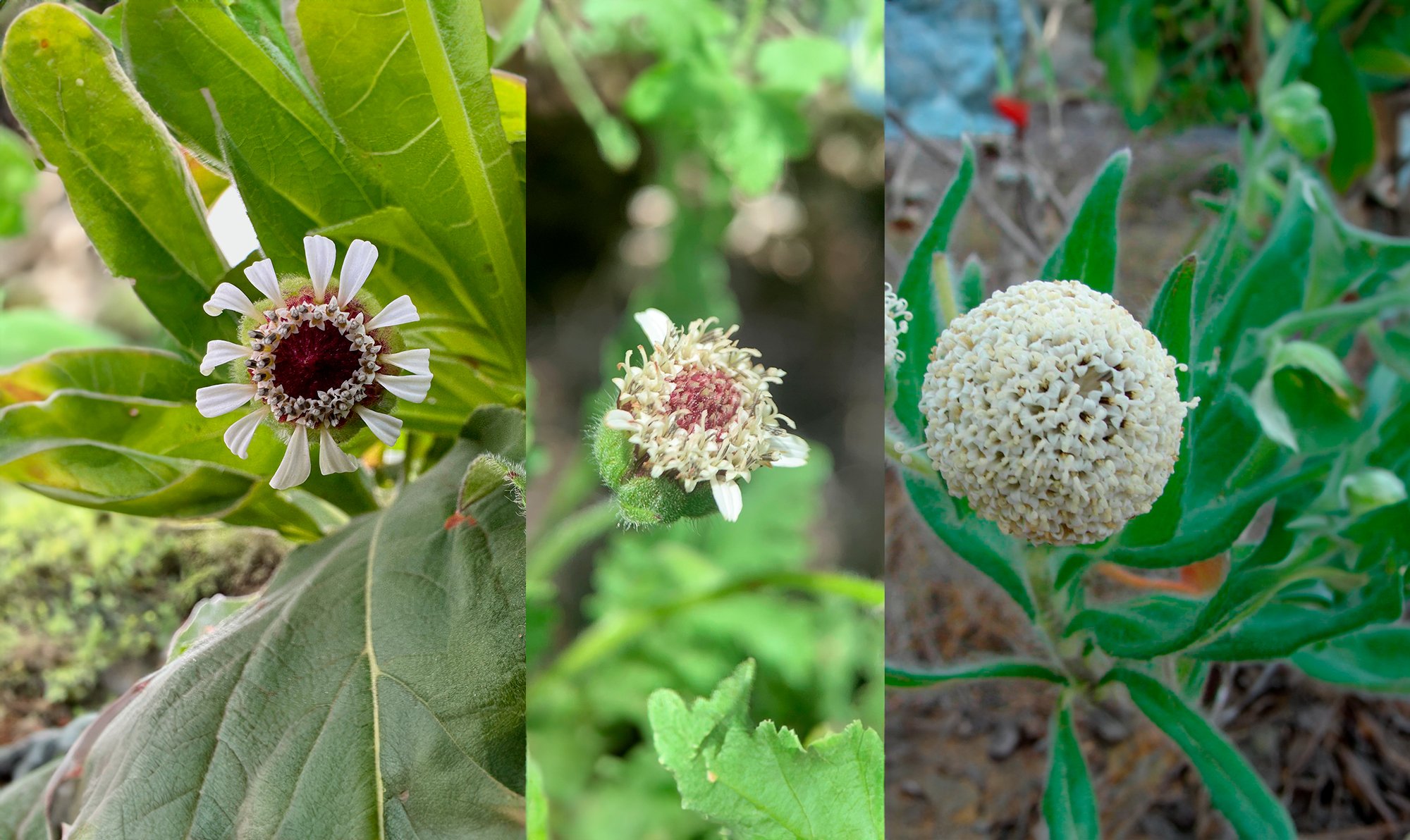
In Galapagos, there are fifteen species of Darwin’s giant daisies (Scalesia). The GV2050 works with three of them. Scalesia retroflexa is restricted to the southeast of Santa Cruz and its population has been reduced due to introduced goats. Scalesia affinis is present in four islands; however, in Santa Cruz, it has been greatly reduced due to urban development. Scalesia villosa can only be found in Floreana and is one of the key plant resources for the Floreana mockingbird (Mimus trifasciatus).
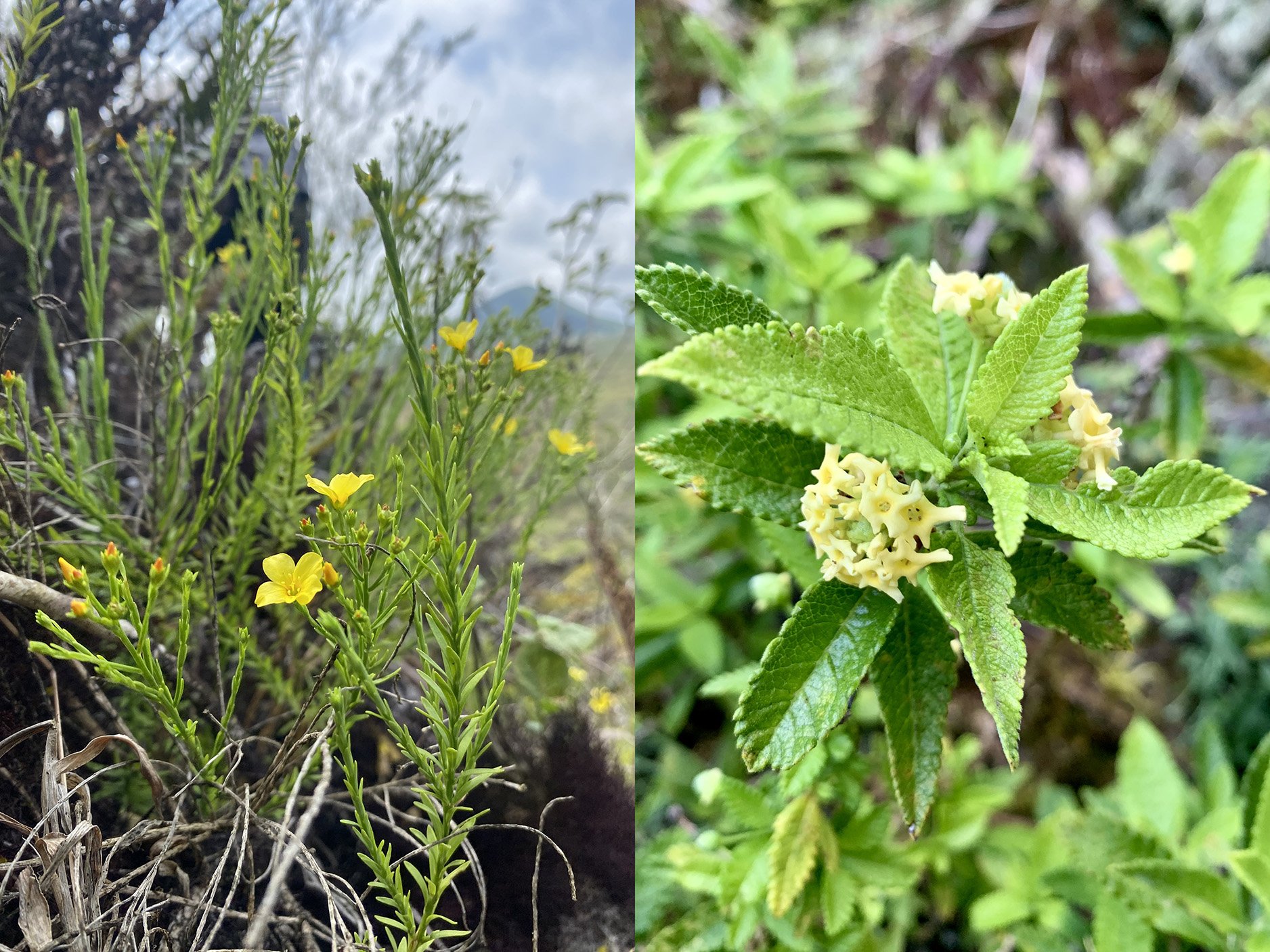
The Floreana flax (Linum cratericola) and Floreana lippia (Lippia salicifolia) two other species unique to Floreana. L. cratericola was believed extinct until it was rediscovered in 1997. L. salicifolia is one of the few species threatened due to the direct exploitation of its exceptionally hard wood, used for house construction in the past.
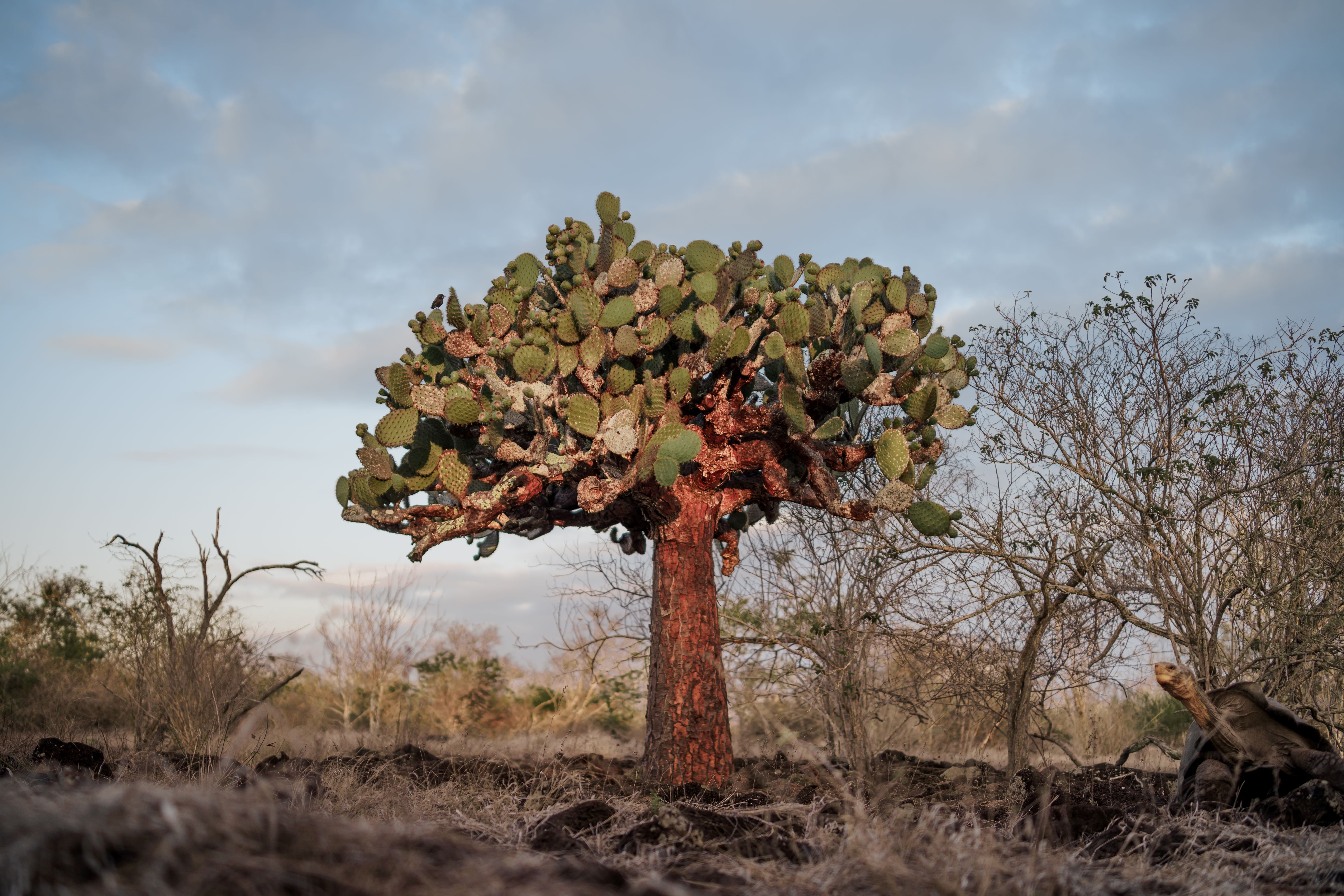
We work with two species of Galapagos prickly pear, Opuntia echios in South Plaza and Opuntia megasperma in Española. Opuntia spp. are recognized as keystone species in Galapagos due to their vital role in terrestrial ecosystems. They serve as important food sources for giant tortoises and land iguanas, while also providing birds with food, shelter, and nesting sites.
Why it matters
Galapagos endemic plants represent unique evolutionary lineages found nowhere else on Earth. Research focused on these species can provide insights into evolutionary processes, species interactions, and ecosystem dynamics. Recovery efforts targeting threatened and keystone plant species of the Galapagos, safeguards not only their own survival, but also that of the diverse fauna that depend on them. These plants play essential roles in their ecosystems, from providing food and habitat for wildlife to improving soil quality. Their extinction would signify a permanent loss for the biodiversity of the archipelago.
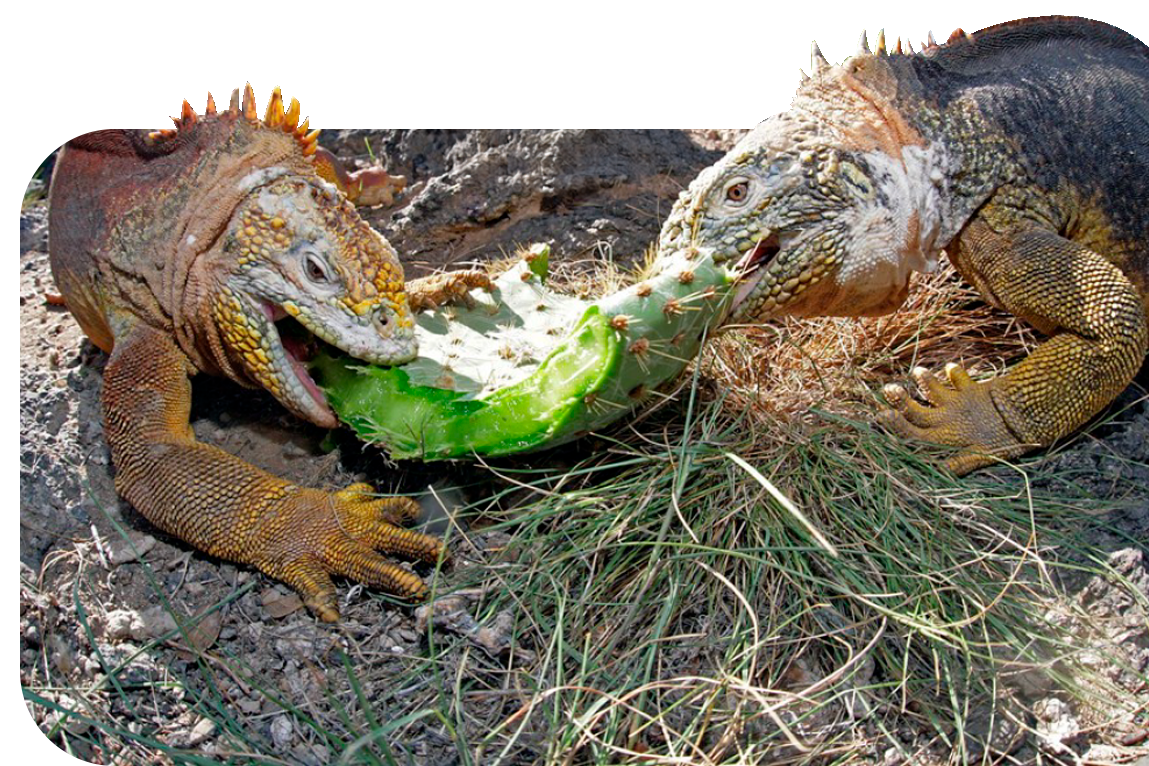
Program Objectives
To contribute to the conservation of Galapagos terrestrial ecosystems and their biodiversity through protecting and recovering threatened and keystone plant species.
It does so with the following sub-objectives in mind:
- Update the assessment of unique plant species in Galapagos using the latest criteria from the IUCN Red List.
- Monitor the population status and distribution of threatened species.
- Increase the number of individuals from threatened species through developing effective recovery strategies.
- Identify the main threats to threatened species by studying their habitat and biological interactions.
- Share key project findings with the local and international community to promote awareness and involvement in conservation efforts.
About GV2050
The GV2050 program has a multidisciplinary research team that brings together professionals from various fields, including ecologists, conservation biologists, biotechnologists, botanical taxonomists, and environmental scientists.
We have worked with the Galapagos National Park Directorate for more than a decade, leveraging both institutions' scientific expertise and practical knowledge. This fosters a comprehensive approach that aligns scientific guidance with effective on-the-ground restoration efforts.
Our impact
Saving plants from the brink of extinction
- We have increased the only known population of the critically endangered Galvezia leucantha subsp. leucantha from only four individuals in 2017 to 17 individuals in 2023 in Northern Isabela.
- We germinated 42 individuals of Lecocarpus lecocarpoides, a species considered locally extinct on Española Island for almost a decade. Thanks to great care and effort, these plants have produced over 6000 seeds that will be used to restore the local population.
- We have confirmed the presence of a population of 23 individuals of the critically threatened Scalesia retroflexa in Santa Cruz, installed a protective fence around the population, and collected seeds to start plant propagation efforts.
- We are propagating three species unique to Floreana, Linum cratericola, Lippia salicifolia, and Scalesia villosa, as well as another 21 native and endemic species in our local greenhouse, which is operated in collaboration of the GNPD and Jocotoco Foundation. Some of these rare plants are essential for the Floreana mockingbird (Mimus trifasciatus), a locally extinct species that is a target for reintroduction efforts. Read more about this here.
Recovering keystone species in arid zones
- We have assessed the application of water-saving technologies with Opuntia megasperma in Española. Key findings indicate planting cladodes results in higher growth and survival than planting seedlings. Additionally, cladodes planted with a Groasis Waterboxx had higher growth and survival than those planted with Groasis Waterboxx + Hydrogel or with no technology (control). Read more about this here.
- We have estimated that the cost of restoring the entire Opuntia echios population in South Plaza using the most cost-effective technology is 34% lower than without any technology. This work complements our restoration of arid ecosystems work.
Working in urban and degraded areas
- In Santa Cruz, since 2014, we have planted approximately 500 Scalesia affinis individuals, primarily in the urban area of Puerto Ayora, in collaboration with local communities. The surviving plants from this initiative now constitute 45% of the total S. affinis population on the island.
- This work is conducted alongside our urban and rural ecological restoration work.
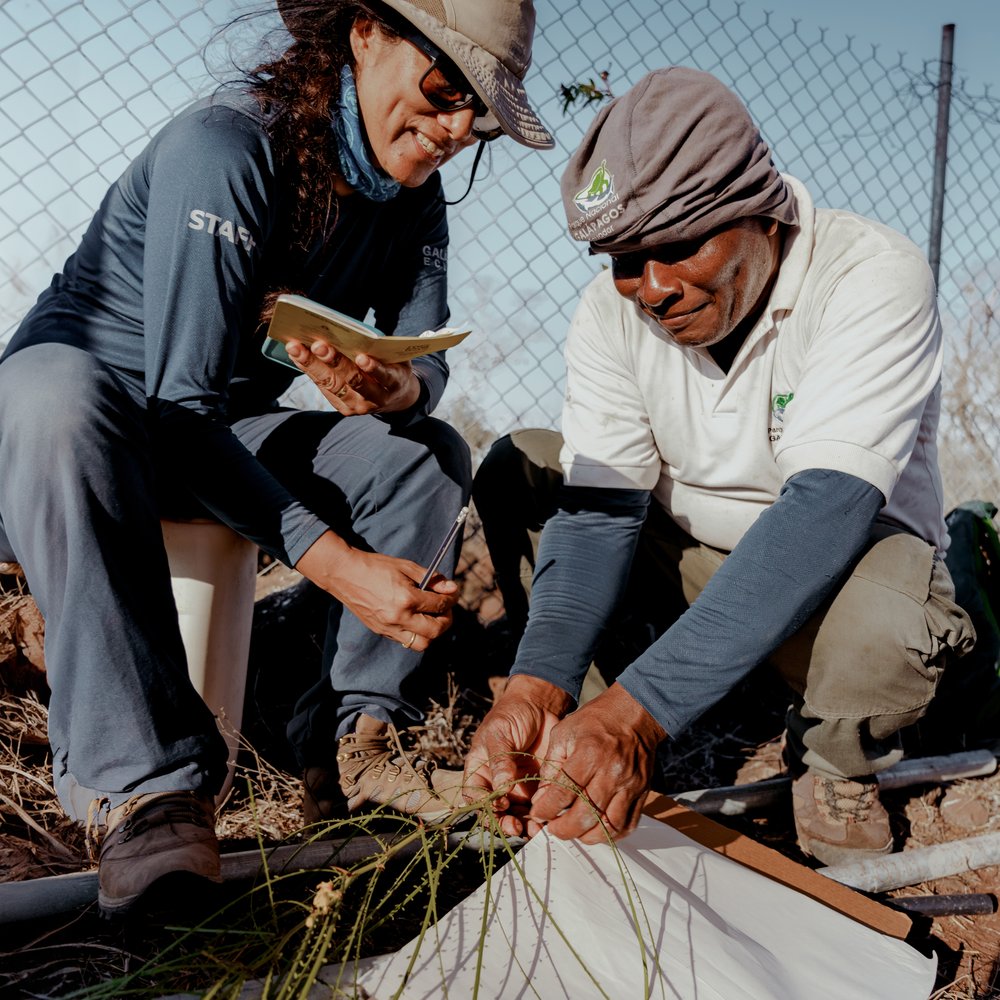

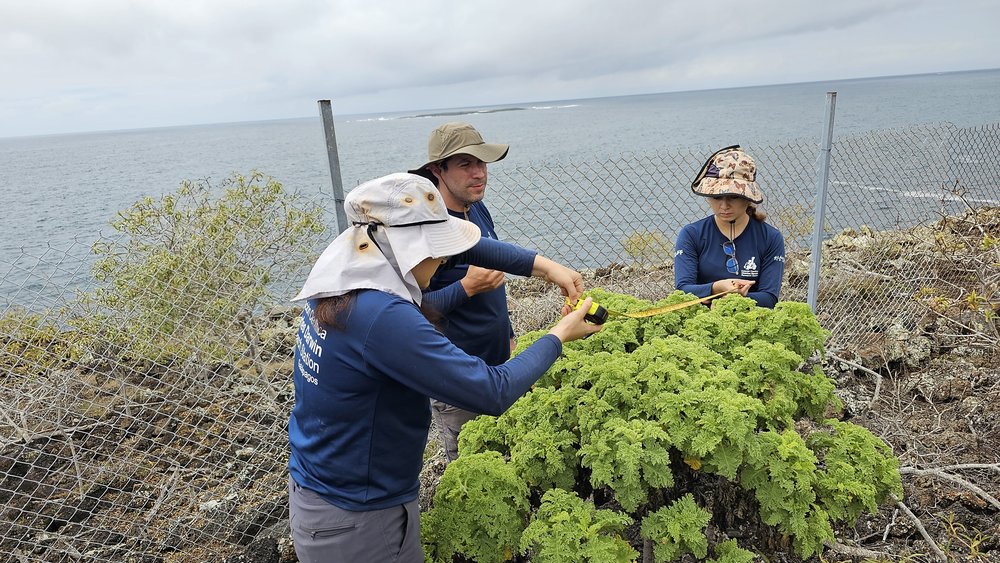
Why you should support us
While plant extinctions to date have been limited in Galapagos, it is an increasingly urgent threat. Through meticulous research and targeted actions, we can actively contribute to the conservation of the unique plant life in Galapagos, thereby securing the future of this extraordinary ecosystem.
Sound research informs effective recovery actions, but time is of the essence as the window of opportunity is rapidly closing. When you support us, you're directly aiding the conservation of threatened and essential plant species in Galapagos, vital for the diverse fauna reliant on them.
Supporting us means investing in tangible, impactful conservation actions that safeguard the future of the Galapagos.

Resources
Atkinson, R., Guézou, A., & Jaramillo, P. (2009). Siémbrame en tu jardín-Plantas nativas para jardines en Galápagos. Puerto Ayora, Galápagos: Charles Darwin Foundation.
Jaramillo, P., Tapia, W., Negoita, L., Plunkett, E., Guerrero, M., Mayorga, P., & Gibbs, J. P. (2020). The Galapagos Verde 2050 Project (Volume 1). In P. Paramillo, W. Tapia, & J. P. Gibbs (Eds.), 67.
Jaramillo, P., Shepherd, J. D., & Heleno, R. (2021). Guide to Galapagos Seeds and Propagules. Puerto Ayora-Isla Santa Cruz: Charles Darwin Foundation.
Tapia, P. I., Negoita, L., Gibbs, J. P., & Jaramillo, P. (2019). Effectiveness of water-saving technologies during early stages of restoration of endemic Opuntia cacti in the Galápagos Islands, Ecuador. PeerJ, 7, e8156.
Negoita, L., Gibbs, J. P., & Jaramillo, P. (2022). Cost‐effectiveness of water‐saving technologies for restoration of tropical dry forest: a case study from the Galapagos Islands, Ecuador. Restoration ecology, 30(5), e13576.
Plunkett, E., Negoita, L., Sevilla, C., Velasco, N., & Jaramillo, P. (2023). Enhancing restoration success of rare plants in an arid-tropical climate through water-saving technologies: a case study of Scalesia affinis ssp. brachyloba in the Galapagos Islands. PeerJ, 11, e16367.
Cevallos, D., & Jaramillo, P. (2024). Assessing Water-Saving Technologies and the Impact of Giant Tortoise Herbivory on the Restoration of Opuntia megasperma var. orientalis on Española Island - Galapagos. Water (Switzerland) MDPI, 16(3–369), 12.
Charles Darwin Foundation (Sept 5, 2022). 2021 Achievements of GV2050 (Video-Spanish)
Fundación La Iguana (Jun 29, 2017). Ecuavisa report on the project (Video-Spanish)
Tye, A., & Jaramillo, P. (2022). Rediscovery of the Galapagos endemic Lecocarpus leptolobus (Asteraceae), its morphology, distribution and taxonomy relative to its congeners. Botanical Journal of the Linnean Society, 200(2), 270–284.

Protect Galapagos, Impact the World
The impact you make on this small ecosystem of enormous biodiversity is part of a larger footprint you are leaving for the world's future. Join us on our mission to safeguard one of our planet’s most important natural treasures through science and conservation action by making a donation today. Thank you for making an impact with us.






